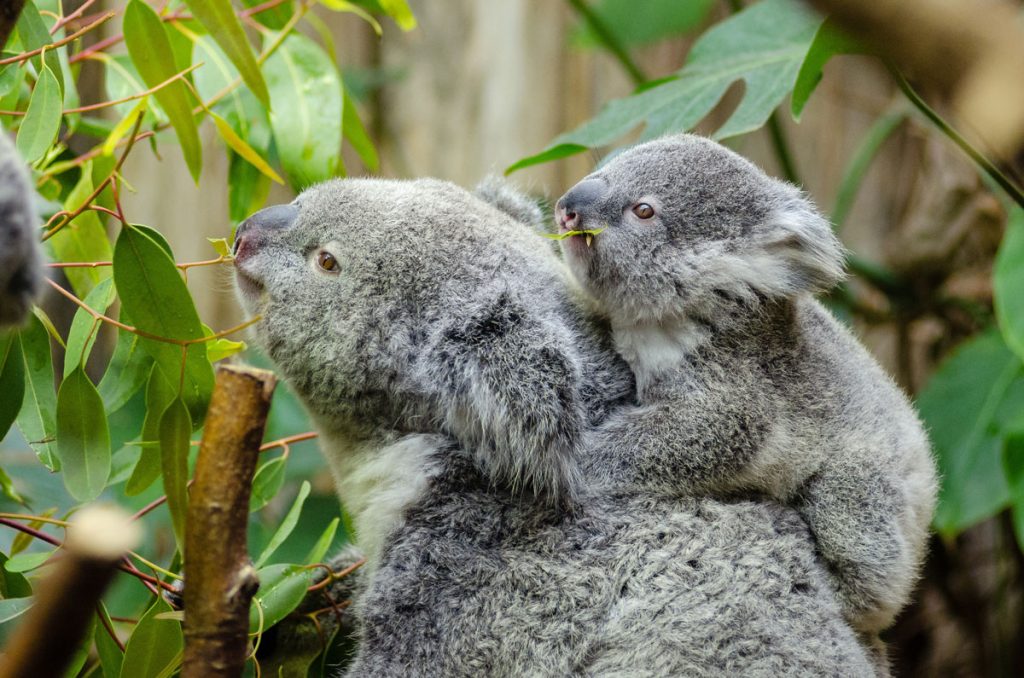Scientific Name
Phascolarctos cinereus adustus
Description
Koalas spend most of their lives in trees. Their large paws have strong claws that they use to get a grip on limbs. They can climb by gripping a branch with their front paws and bringing their back paws up to their front. Then they move their front claws up and repeat this motion. This motion is very slow in order to conserve energy. They also sleep up to 18 hours each day. The koala has a very short tail, so it cannot be used to hold onto trees. Female koalas have a pouch, a distinguishing characteristic of marsupials. Males are up to 50 percent larger than females and have a broader face.
Food
The Koala has been known to feed on a large number of eucalypt and non-eucalypt trees. However, most of their diet is made up of only a few species of eucalypt trees. The koala eats about one pound of leaves each day. This feeding starts at dusk. They obtain almost all of their water from the leaves that they eat.
Habitat
Koalas are found only in Australia. They prefer to live in eucalypt forests, since the eucalyptus tree is its preferred diet.
Social Structure
Adult koalas have permanent home ranges, with a male’s range overlapping several females’ ranges. Other than breeding season activities, there is very little social interaction or grouping.

Birth & Offspring
Breeding season starts in October and lasts until February. During this time males become aggressive, calling out to other males and to females. The other males will usually respond with calls of their own. These calls are made by a series of inhalations followed by a loud growl. Males will mate with several females. After a gestation period of 34 to 36 days, a single koala is born. The newborn weighs less than 2 ounces and attaches to its mother in her pouch. It stays in the pouch for seven months.

Lydia King is a huge animal lover and has always been fascinated with learning about the animal kingdom. She enjoys writing about anything animal related from scientific information about rare species to animal references in pop culture.












